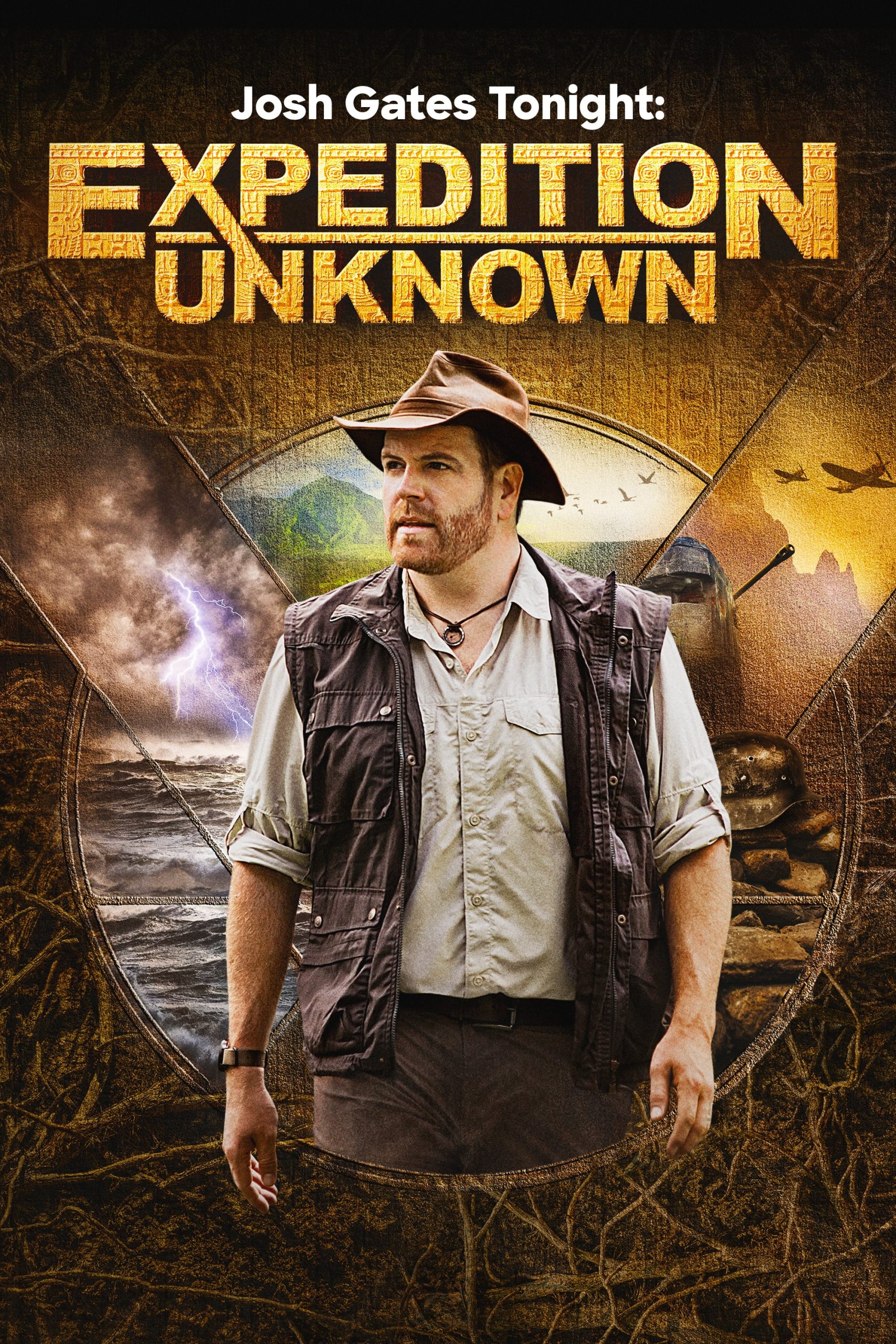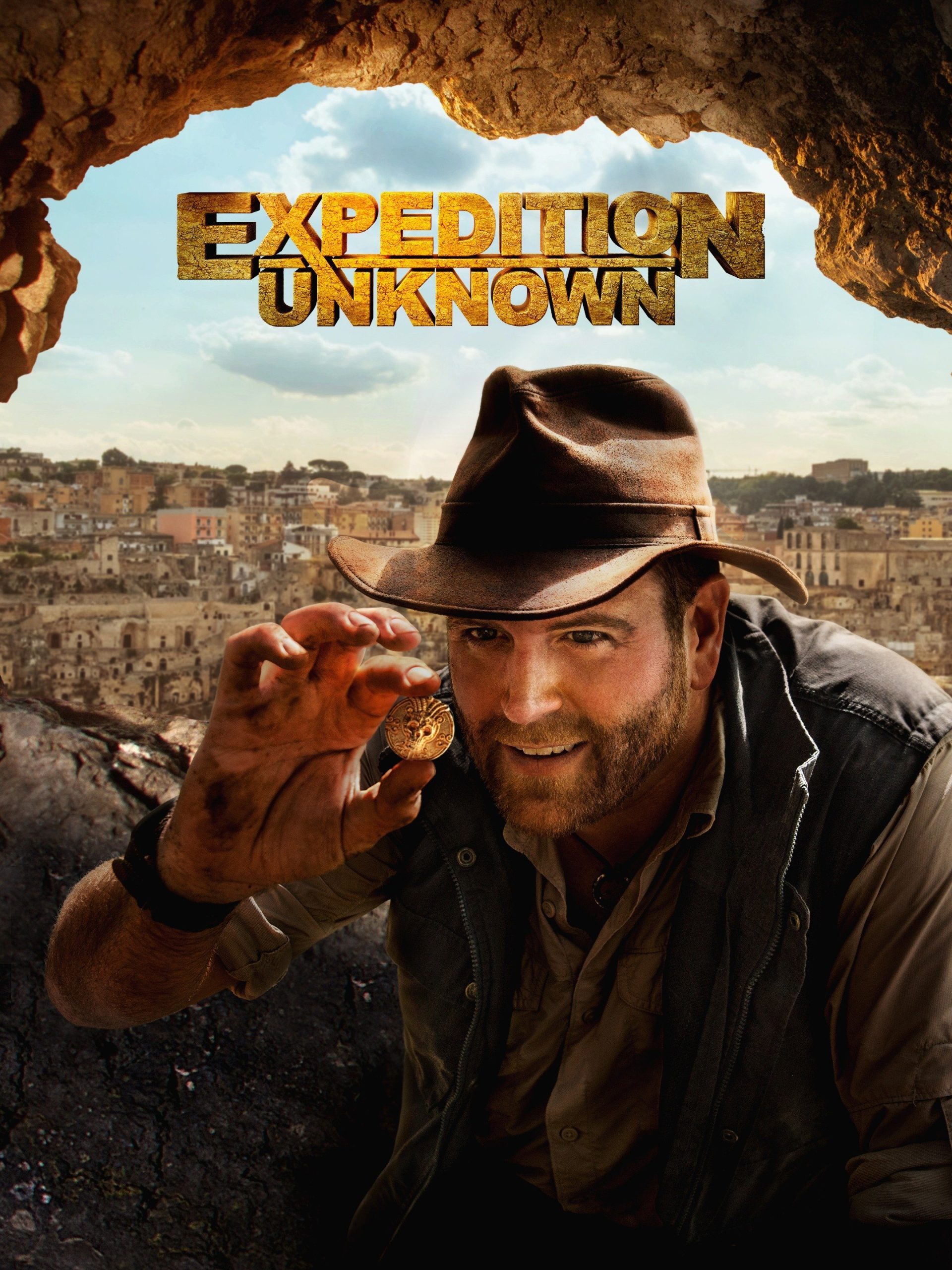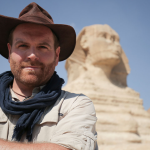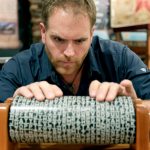Shows centered on uncovering mysteries and hidden treasures are actually more common than people might think. However, the reason “Expedition Unknown” amazes us so much is how thoroughly well-thought it is, taking us on so many different adventures and to historical places, that they’re impossible to count.
Premiered in 2015 and with several aired seasons and spin-offs, it’s undeniable that “Expedition Unknown” has awakened people’s thirst for adventure, especially if it involves discovering the truth hidden in the past and in isolated places.
That being said, no show focused on mysteries would be satisfying to watch if it didn’t let its audience see real results and findings worth the excitement, but does “Expedition Unknown” actually achieve that premise?
Keep with us to know everything about “Expedition Unknown”s discoveries, theories and the eyebrow-raising stories it has let us see so far!
How The Viking Sunstone Was Used
One of the most significant discoveries made by “Expedition Unknown” happened in the first season, when Josh Gates and their team unveiled the mystery behind the Viking Sunstone. This medieval artifact was supposedly responsible for helping Viking navigators back in the day, but no real evidence of it was ever found, except for records as old as from the 13th century which attested to its existence.
However, history changed forever when a stone believed to be the legendary sunstone was found in a recovered shipwreck in England in 2013, awakening a centuries old mystery which Josh Gates couldn’t stop himself from investigating.
Josh’s quest takes us to many places, such as the location where the ship containing the stone was found near Alderney in the UK’s Channel Islands, although actually off the French coast, then visiting the Viking King Olaf’s tombstone in Norway, to finally arrive in Kongsberg, where he took a calcite piece from the bottom of a local mine.
Knowing this calcite is the same material that the sunstone is made of, Josh tested it on board a modern Viking boat using a shadow stick and a board. In the end, the light reflected on the board served the same purpose as a modern compass, proving not only that the sunstone indeed worked, but also uncovering what maritime Viking magic was all about.
A Thomas Beale’s Ploy
In the first season of “Expedition Unknown”, viewers saw how Josh Gates’ investigation of the Beale ciphers took an interesting and exciting turn. As it happens, the Beale ciphers have been widely popular since 1880, when a man named James Ward published the pamphlet “Beale Papers”, containing cipher texts appárently written by Thomas J. Beale in the 1820s, supposedly hinting at the location of a millionaire gold treasure hidden in Virginia.
Though Beale’s ciphers are doubted by skeptics and praised by treasure hunters, Josh knew the mystery was worth his attention.

His adventure started in Virginia, where he and the expert Justin Cannady went on to investigate a cave near Josh River which looked exactly like the markings found on a version of the Declaration of Independence, a paper apparently signed by Thomas Beale.
Not finding much in the cave, Josh headed to Maryland to meet the cryptanalyst Todd Mateer, who after scanning and analyzing the cipher on the Declaration, identified six errors which would made its solving impossible. Further analysis showed the original Beale’s cipher-text were written in the same sequence, hinting that the texts were most-likely fabricated by the publisher James Ward. Once again, this was a win for Josh, but also poses more questions regarding this apparent ploy, and the reason behind it.
King Arthur’s Inspiration
The debate surrounding whether or not King Arthur actually existed isn’t something new.
Many historians agree that King Arthur is a made-up folkloric character, but others argue that the original tales were inspired by a real person.
Attempting to discover what’s really behind the Arthurian legend, Josh Gates traveled to England to visit the ruins of Tintagel Castle, believed by some to be the mythical Camelot, where according to tales, Arthur was born and raised.
While going to popular places such as Merlin’s Cave didn’t reveal too many clues, he later moved on to Wales, to investigate where the Knights of the Round Table were supposedly buried. According to experts Gary Evans and Andy Freem, medieval-dated human remains were found in the place in the past.
However, the real discovery was soon to come in Scotland. While in Stirling Castle, Josh met with writer Adam Ardrey, who showed him the supposed location where the King drew his sword based on the ancient foot markings in it.
More importantly, Ardrey showed evidence of a man named Arthur Mac Aedan’s existence, believed to be the inspiration behind Arthur.
Even though finding physical evidence of the real Arthur is most likely impossible, it’s not far-fetched to think that the legend behind the King is indeed inspired by real people.
What’s Behind The Vampire Legends?
Many myths, legends and monsters popularized by the media include real references that are sometimes even more exciting than the fictional ones, such as the case of vampires.
To discover what’s really the origin of the legendary blood-sucking monsters, Josh went to Romania, and was informed of the gruesome story of a man named Petre Toma, whose grave was desecrated by villagers who suffered from rare illnesses and nightmares including Toma after the latter’s death.

They exhumed the man’s body from its grave the following days after his death, took his heart and prepared a potion with it. The men involved were imprisoned, and the story is locally known given its recentness.
Then in Bulgaria, Josh meets fellow archaeologist Nickolay Ovcharvoc, who shows him the shocking skeleton of an alleged vampire he discovered. As Ovcharvoc described, the plowshare on the corpse’s neck was said to stop the body from becoming a vampire, but could also indicate that the person might have suffered from an infectious disease.
After analyzing the DNA, Josh and Ovcharvoc were told that the person suffered from a specific type of Porphyria, which could have caused them to be sensitive to daylight, have elongated gums, and caused an allergy to garlic, possibly finding the reason why the ritual was performed.
The Origin Of Japan’s Atlantis
Everyone knows the story of the lost civilization of Atlantis, but while some take this as a tale, others are convinced of its reality.
A similar mystery could be found in Yonaguni Island in Japan, where the origin of underwater structures has been the subject of debate for decades.
While scientists and geologists haven’t agreed on whether said monoliths are man-made or natural, Josh went to Japan to explore the place himself. First he was taken to dive with Kihachiro Aratake, the man who discovered the ruins in the 1980s, and is convinced that the place isn’t natural. Kihachiro shows Josh some of the most distinctive features of the underwater structures, such as its perfect angles, carved-looking holes, markings and above all, a face on stone similar to one they would later compare to one found in a nearby jungle.
Looking out for evidence on the surface seems the way to go, so Josh visited the Katsuren Castle and a tomb in the forest, both of which had similar structures to those observed in the ruins.
After exploring a local volcano and going back to the ruins, Josh concluded that the structures are man-made and were most likely part of a temple, theorizing it probably sank centuries ago caused by local volcanic activity.
Kalahari’s Lost City
Mysteries about lost civilizations are more common than you might think, but discovering the truth behind these is often difficult, given how blurred is the line between myth and reality.
This is the case of the lost city of the Kalahari Desert, in Africa. Reportedly, in 1885 a circus owner named The Great Farini claimed to have found ruins of a lost civilization in the Kalahari. However, those who went to investigate either claimed he lied or didn’t even return, eventually causing Farini’s reliability to be doubted, but at the same time popularizing his story.
Over a century later, Josh took matters into his own hands by traveling to South-West Africa, and meeting the explorer Adam Cruise, who took him to explore some structures in the Kalahari Desert.
However, both Josh and Cruise determined that the rocks were natural formations, also theorizing that Farini’s trips would have only taken him as far as the north of Botswana.
Traveling then to explore the adjacencies of the Orange River, Josh and Cruise are taken by locals to explore nearby ruins, which were similar looking to those Farini photographed back in the day. Seeing the similarity, Josh concludes that despite the possible initial exaggeration of his claims, the ruins were most-likely the ones Farini caught sight of back then.
The Ruby Slippers
Finding the answer to an ancient mystery is the dream of almost every researcher and aficionado. However, modernity offers incredible and puzzling enigmas as well, such as the case of the ruby slippers worn by Judy Garland in the 1939 movie “The Wizard of Oz”.
As it happens, many pairs of these shoes were sold throughout the decades following the movie’s release.
One specific pair was sold in 1970 by the designer Kent Warner to an acting coach named Michael Shaw, who in 2005 lent the pair to Minnesota’s Judy Garland Museum for a short time. Shockingly, in August that year, the ruby slippers were stolen from the museum, and haven’t been seen again.
On his way to find the answers to this crime, Josh Gates visited several memorabilia collectors, including Shaw and others who might give him some clues. Thanks to Minnesota’s police, Josh contacted a suspect for the crime, who revealed the shoes’ false location in the Mississippi River. Later on, Josh and detective Brian Mattson contacted someone who affirmed to own the slippers, leaving further investigation to the FBI. Finally, in September 2018, Michael Shaw received the best news of his life when Josh told him that the ruby slippers had been found.
Egypt Live
Undoubtedly, one of the biggest events ever featured in “Expedition Unknown” happened in 2019, when the opening of several millenniums-old sarcophagi was exclusively featured in the show.
Although “Egypt Live” wasn’t necessarily a discovery made by Josh Gates and his team, offering a deep insight about the team of Egyptologists behind these uncoverings surely counts as a big win for “Expedition Unknown”. First, Josh and fellow TV host Chris Jacobs accompanied Dr. Zahi Hawass, as he showed them the interior of a female mummy from around 664 to 525 BC, in the 26th Dynasty.
A second sarcophagus is opened by Dr. Hawass’, showing the poor mummification of a middle-aged man. The best part was yet to come though, as the third and more important sarcophagus is exclusively opened for “Expedition Unknown”s audience.
As commented by the scientists, this third mummy was perfectly preserved, despite it being 3,000 years old. While some rare artifacts in the sarcophagus made it all the more special, what truly set this mummy apart from the others was the fact that it was a High Priest, who was apparently given a burial very similar to a that of a Pharaoh.
Truly the experience was unforgettable for the audience, but especially for Josh, who described it all as ‘the thrill of a lifetime’.
The Secret Finally Uncovered
Any fan of puzzles and mystery knows about the existence of the 1982s book “The Secret”, written by Byron Preiss, in which he created several puzzles in order to find 12 treasures buried by himself all around the US. The first box was discovered in Chicago in 1983, while the second one was uncovered in 2004 in Ohio.
Given the interest in these treasures, in 2017 Josh Gates answered the call from Andy Abrams, the man who discovered the 2004 box, and thinks that he’s found a third one. They went to Florida to dig up the alleged treasure from the Fountain of Youth Archaeological Park, but with unsuccessful results, finding a tile instead of a box.
However, in 2019 a game designer named Josh Krupat asked for Josh’s assistance to dig up what he believed was the third box. As it happens, Krupat suspected for a while that one treasure was hidden under a baseball home plate in Langone Park, Boston, but didn’t take matters into his own hands until knowing the park was being remodeled, meaning the box was going to be lost forever. In the end, Josh and Krupat dig up the third box, but the other nine are still waiting to be found, somewhere.
However, what made this quest and all the others led by “Expedition Unknown” special, was not to find a treasure in the end, but is more about enjoying the thrill of mystery while it lasted.






